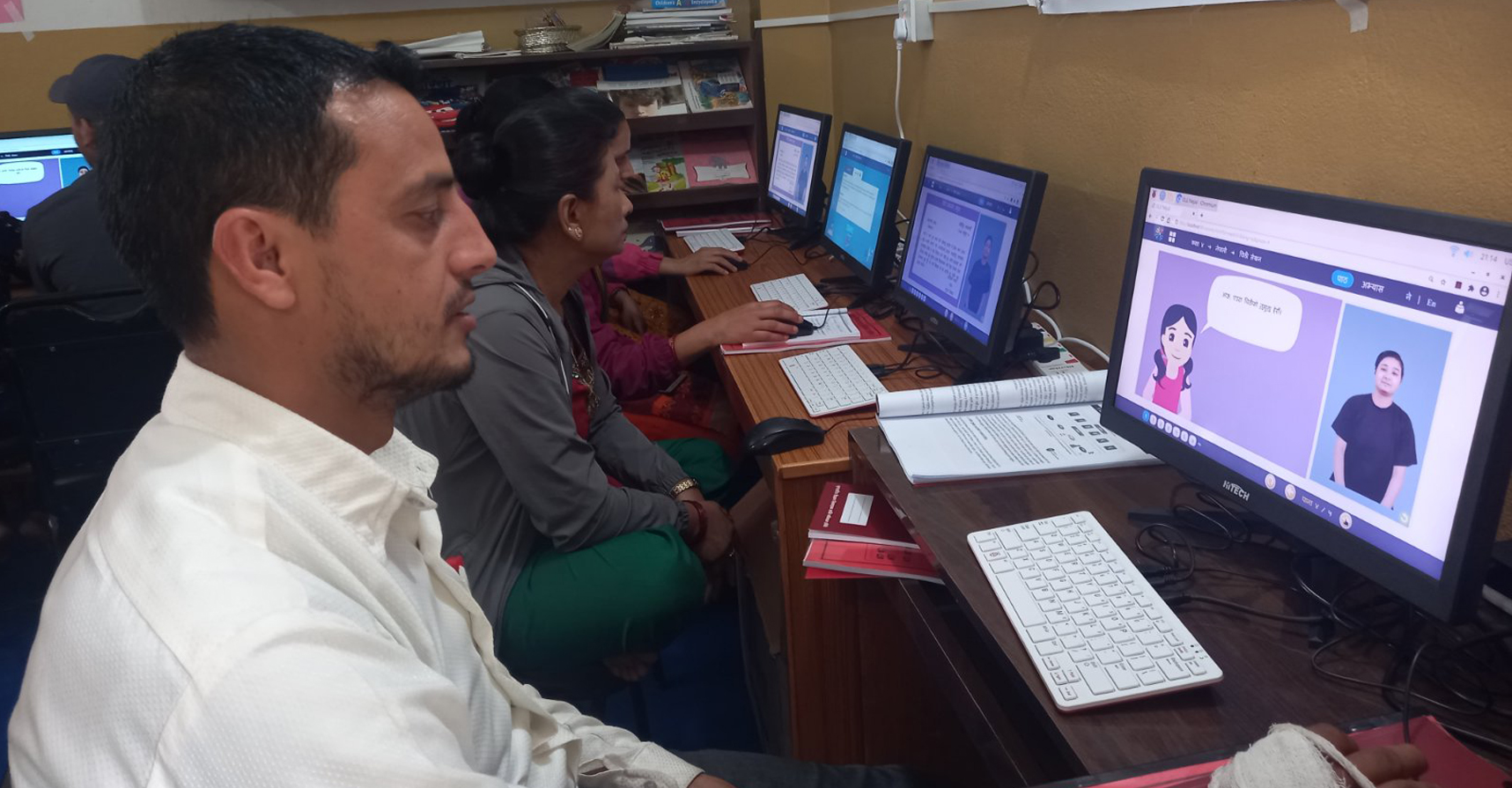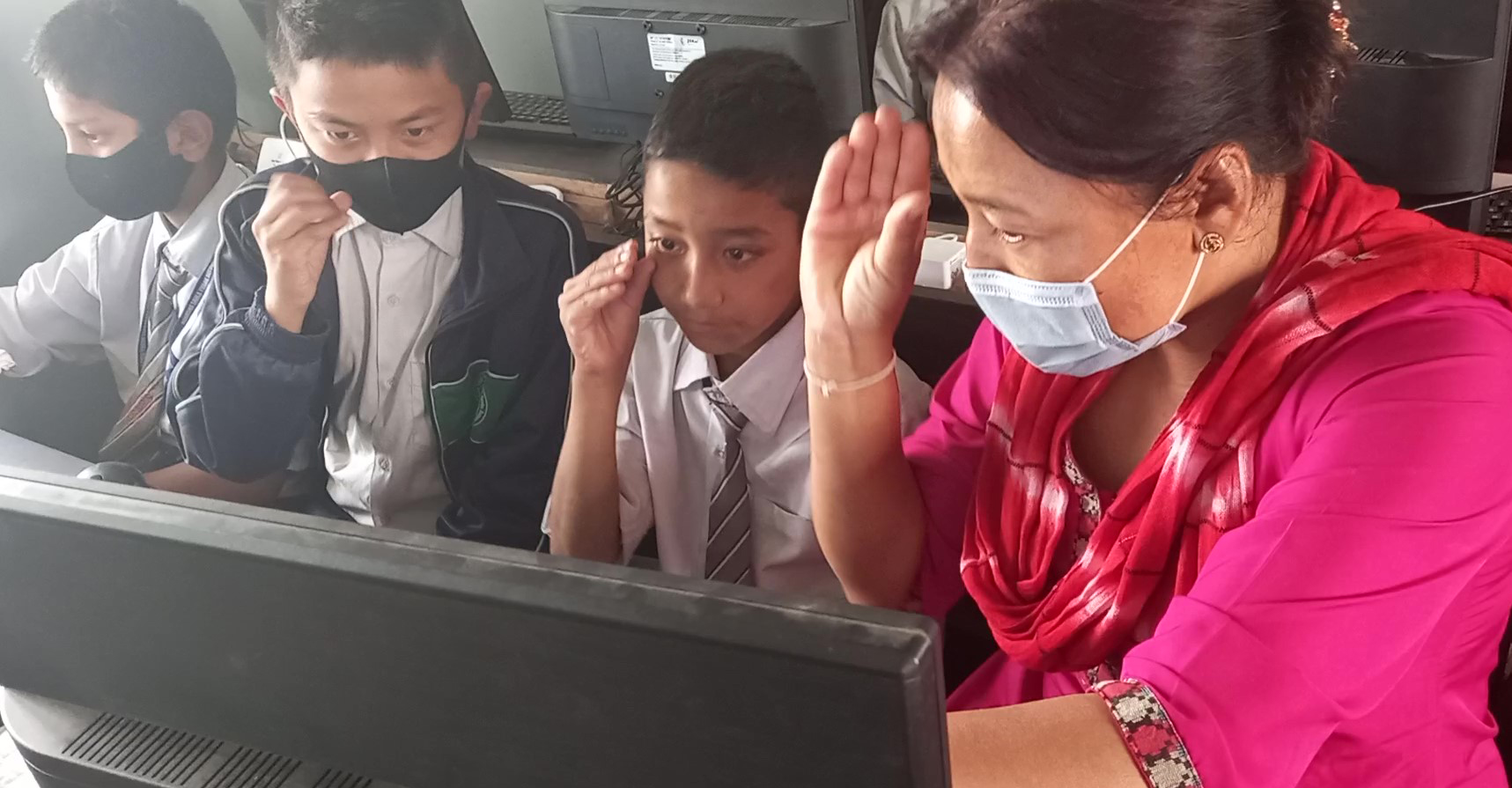
OLE Nepal is a social benefit organization with the motive to improve access to quality education and meaningful learning. There is a vast disparity in the education system in Nepal across population groups and socioeconomic strata. By integrating technology in classrooms and home-learning environments, OLE Nepal aims to close this gap.
Why Accessibility?
We started the Accessibility Project in 2021 as part of our mission to bridge the gaps in education. We’ve always been working towards making learning accessible. We introduced projects, resources, materials and content specifically focusing on public and community schools where both students and teachers required the most support. However, just encompassing geographical or a school-type issue was not enough. Even within these groups that were most affected by the gap in quality education, there existed more minorities.
Therefore, we initiated a project that would open up learning opportunities to students with learning and hearing impairments. We converted Nepali textbooks to an accessible format so that blind and visually impaired students could access them using screen reader software. We also updated our digital library, E-Pustakalaya, to be compliant with accessibility guidelines and created a section for accessible books and audio materials. For students with hearing impairments, we embedded Nepali Sign Language (NSL) videos in our interactive digital learning materials, E-Paath, and also created activities that students can use to learn NSL. We then piloted the program in three schools that were inclusive of students with disabilities to test this accessible content. We were not only making education accessible, but we also aimed to make it inclusive and representative.
What we did
For children with hearing impairments:
Through the Accessibility project, we embedded Nepali Sign Language (NSL) videos on our digital learning activities, E-Paath, so that children with hearing impairments can follow the instructions and interact with the learning content.
Known as “Sanketik Sikai” 1, our NSL-embedded content, allows students to learn subjects like science, social studies, mathematics, and Nepali with the help of sign language. We’ve also created lessons to help students learn NSL and to talk about everyday situations, feelings and relationships so students can learn how to express themselves fully through NSL. These learning materials aren’t only supportive to students and teachers who use NSL, but they can
also be used by peers and family members of these children to help communicate better with them. In addition to this, we also deployed laptops and provided accessible educational content to the blind section in one of our program schools.

For children with visual impairments:
We realized that technology could open up access to books and learning resources for people with visual impairments, who have been limited by a handful of Braille books that they may have access to. Hence, we created a process to convert Nepali books to an accessible format so that blind and visually impaired students can use mobile devices, tablets and computers to access them using commonly available screen reader softwares. We also made our digital library, E-Pustakalaya, compliant with the accessibility guidelines so that learners can browse through the digital library and find these accessible books, increasing their opportunities to receive education the same as their peers, as compared to in the past.
Feedback from the school
The project was well received by both staff and students from our program schools. One of the school principal’s expressed that this was the first time teaching material was available in sign language. The teachers who relied on NSL now had the ability to teach their classes using content specifically made for them. Likewise, the accessible ebooks were also noted to be supportive to the blind section in our program school. We interviewed a student from Namuna Machhindra School who said that with OLE Nepal’s accessible learning materials, her and her peers had access to both learning resources to practice for their exams, and also other story books that they could listen to. Here’s a short video featuring the student who shares her experience with the Accessibility project.
Furthering our mission
By reaching a minority even within a marginalized group, we’re ensuring that there is no stone left unturned as we build bridges to bring access. Through our accessible digital library, we aim to level the field for all students who previously lacked access to the same materials as their peers. Through our digital learning materials embedded with Nepali Sign Language, we aim to foster accessible and inclusive learning within both classrooms and home environments.
Previously, we were creating regular digital contents targeted at a general population of learners. We were focusing on access from outside regular classrooms; activities and learning materials that can be accessed from homes, learning materials that students can practice by themselves. With the Accessibility project, we brought the focus to students who needed that support.
At OLE Nepal, we strive to bridge the gap in education and learning, but hand-in-hand, we also intend to build bridges that connect communities.
1 This means “learning with signs” in Nepali.
